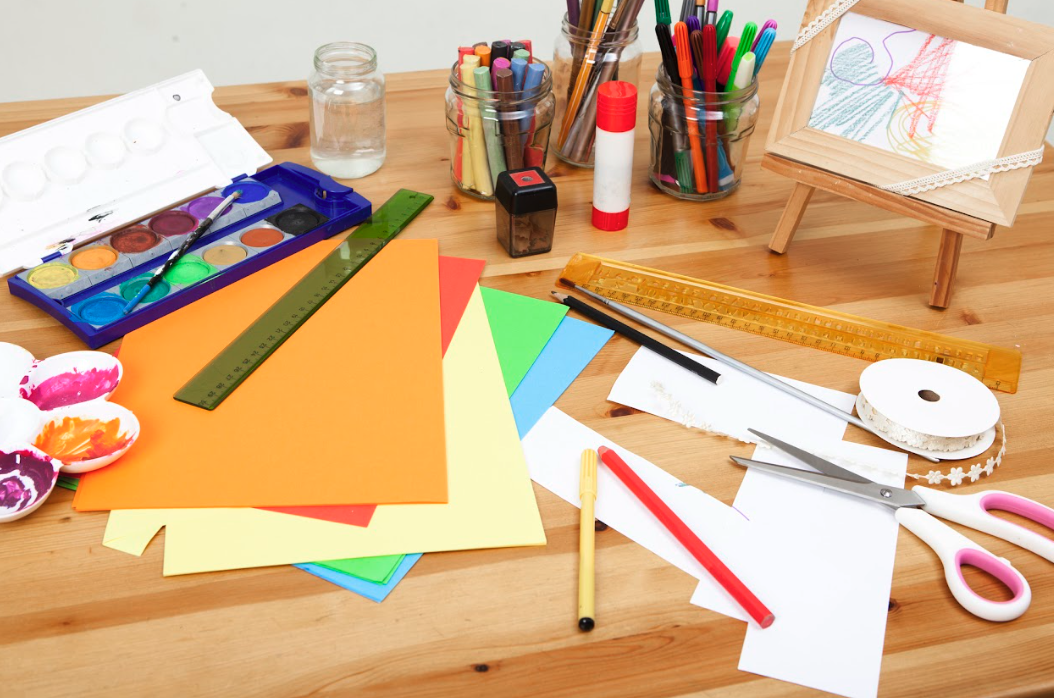As discussed by the American Art Therapy Association, arts and crafts for senior citizens offer many benefits from helping to maintain cognitive abilities to providing a general sense of empowerment. The National Library of Medicine further highlights that opportunities for creativity support continued mental well-being and healthy aging. As such, a diverse offering of crafts for senior citizens is an important part of the wellness and activities programming in many senior living communities including Arbors of Hop Brook.
Crafts for Senior Citizens to Help with Mobility, Mental Health and Memory
For people of all ages, artistic endeavors have been a source of relaxation and a vehicle for self-expression. For senior citizens in particular, arts and crafts can help maintain motor skills, mental health and even memory. Assisted living communities take special care to provide a plethora of arts and crafts offerings and to accommodate residents’ health considerations and preferences in doing so.
While the popular creative endeavors listed below can certainly be done independently, doing them in a communal setting provides the added benefit of social engagement. As emphasized by the CDC, social engagement also contributes to better mental and physical health, especially for seniors.
- Painting or drawing: Assisted living facilities may offer “Open Studio” time as highlighted on the Arbors’ activity calendar or guided painting or drawing events. This type of craft can also be adjusted for varying skill levels, and residents in senior living communities can receive accommodations from their coordinators or from guest facilitators, if needed. In addition to maintaining hand-eye coordination and other fine motor skills, this creative outlet has also been helpful for those experiencing depression, anxiety, dementia or Alzheimer’s disease, as shared by PsychCentral.
- Scrapbooking or card-making: This craft for senior citizens provides the opportunity to reinforce memory through talking about the intended recipient for the card or the stories behind old photos. Enjoying this activity in a communal setting versus independently offers the additional emotional benefit of social connection, as well as the upkeep of coordination and fine motor skills.
- Knitting, crocheting or macramé: Even those struggling with arthritis can benefit from the dexterity and coordination that these crafting opportunities require. In addition to supporting agile hand movements, crocheting a blanket for a new grandbaby, making a friendship bracelet for a Swift fan in the family or knitting a set of mittens for kids in need contributes to mental agility as well, specifically maintaining focus and pattern-based memory work.
- Flower arranging, jewelry making or pottery work: In addition to a variety of fine motor skills, these craft opportunities can also stimulate multiple senses. While arranging fresh flowers grown by community members in the onsite garden, senior citizens can enjoy connecting with nature and the sense of accomplishment that can be achieved through creating beautiful designs. Jewelry making and working with clay have similar benefits, and all of these experiences can help with relaxation and releasing worry.
- Coloring: Focus, fine motor skills and stress reduction are just a few of the benefits associated with this particular craft. From decorative creations intended for holiday displays to the simple enjoyment of this activity on a rainy afternoon, this relaxing activity has made a well-deserved return to popularity for people of all ages.
Crafts and Connection Opportunities for Senior Citizens in Assisted Living
For their social engagement benefits and as well as their support of physical and mental health, crafts are clearly a valuable and impactful senior living activity. Crafts and hobbies can be enjoyed with friends and loved ones of all ages who may be visiting or live nearby, as well as any fellow seniors at a comprehensive care facility. Additionally, many of the crafts and hobbies of senior citizens in assisted living can serve as a bridge for their continued engagement in and contributions to local towns and programs. Here are some examples of these connections in the Arbors’ community:
- Residents work with art associations, poetry societies and adult and continuing and education programs.
- Volunteers participate in literacy programs by serving as Reading Mentors in local school systems.
- A team of knitters crafts handmade hats and mitten sets which are then donated to the local Head Start program.
- Residents run and form their own clubs and volunteer services in connection with the in-house library, garden or arts and crafts offerings.
A senior living community can help make crafts more available and accessible to its citizens and therefore better enable them to reap the benefits associated with these activities. The care team at Arbors of Hop Brook understands how the enjoyment of crafts and hobbies significantly contributes to senior health. One of the many positive features about our community is that both our staff and our residents take pride in supporting and facilitating these activities as well as participating in them. Contact us today to find out more about life at Arbors of Hop Brook or to schedule a tour!


